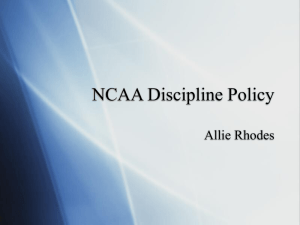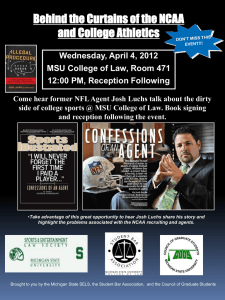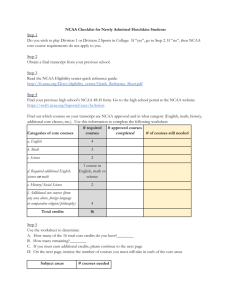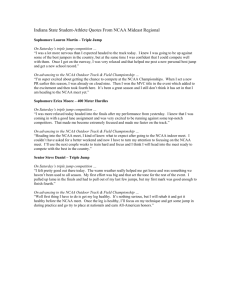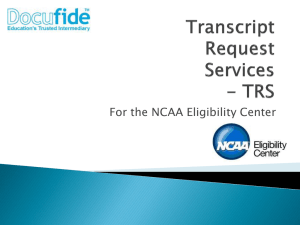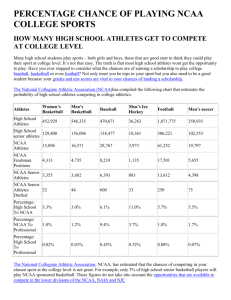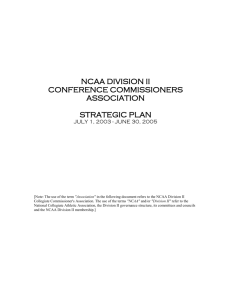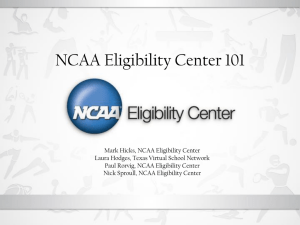NCAA COMMERCIAL RESTRAINTS
advertisement
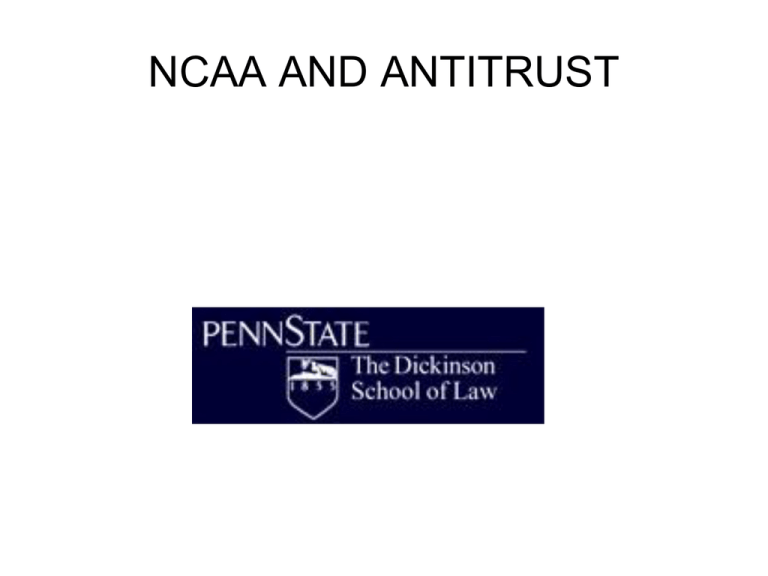
NCAA AND ANTITRUST NCAA v Okla Regents: THE Major Antitrust Precedent for College OR Pro Sports 1> Sherman Act only bars unreasonable restraints of trade 2> use Rule of Reason because this "involves an industry in which horizontal restraints on competition are essential if the product is to be available at all" 3> KEY R/R EXPOSITION: Price is higher and output lower than they would otherwise be, and both are unresponsive to consumer preference.“ 4> THUS: "these hallmarks of anticompetitive behavior place upon petitioner a heavy burden of establishing an affirmative defense which competitively justifies this apparent deviation from the operations of a free market" REVIEW: the Rule of Reason • First, pltf establishes actual anticompetitive effect • Direct evidence re price or output • Indirect evidence of defts’ market power • Second, deft demonstrates pro-competitive justifications • Third, pltf can rebut by showing that restraint is unnecessarily restrictive Application of the Rule of Reason to Bd of Regents • How would you apply the Rule of Reason to the NCAA’s television agreement? • What are the NCAA’s legitimate justifications? • What are the real motivations for the NCAA’s agreement? Fundamentally different approaches of majority and dissent • Stevens: NCAA as a distinctive commercial product • White: NCAA’s non-commercial goals are “central” NCAA’s Non-Profit Status • Does the NCAA act any differently than it would if it were profit-maximizing? What non-commercial goals are furthered here? NCAA’s special role /2 • Professional Engineers rejected non-economic justifications for restraints of trade by commercial enterprises; BRW says that this principle should not apply to non-profit institutions – Do you agree that, while only Congress should be able to allow for-profit companies to restrain trade to achieve socially worthy goals, non-profit institutions should be able to argue to a court that it’s noneconomic goals are legitimate justifications for trade restraints under the Rule of Reason? • Should NCAA be able to take surplus profits from football and men’s basketball to cross-subsidize nonrevenue sports? DISTINGUISHING NONCOMMERCIAL RESTRAINTS • Smith v NCAA [918] is an important precedent: non-commercial restraints do not ‘restrain trade’ • No clear restraint in any relevant commercial market • No suggestion that intent or effect of rule is to enhance revenues • Can’t apply “output responsive to consumer preference” criterion to non-revenue sports, since if responded to consumer preference wouldn’t offer the sport! COMMERCIAL/ NONCOMMERCIAL • Why is Smith’s challenge to graduate school participation not analyzed as a restraint of trade?
